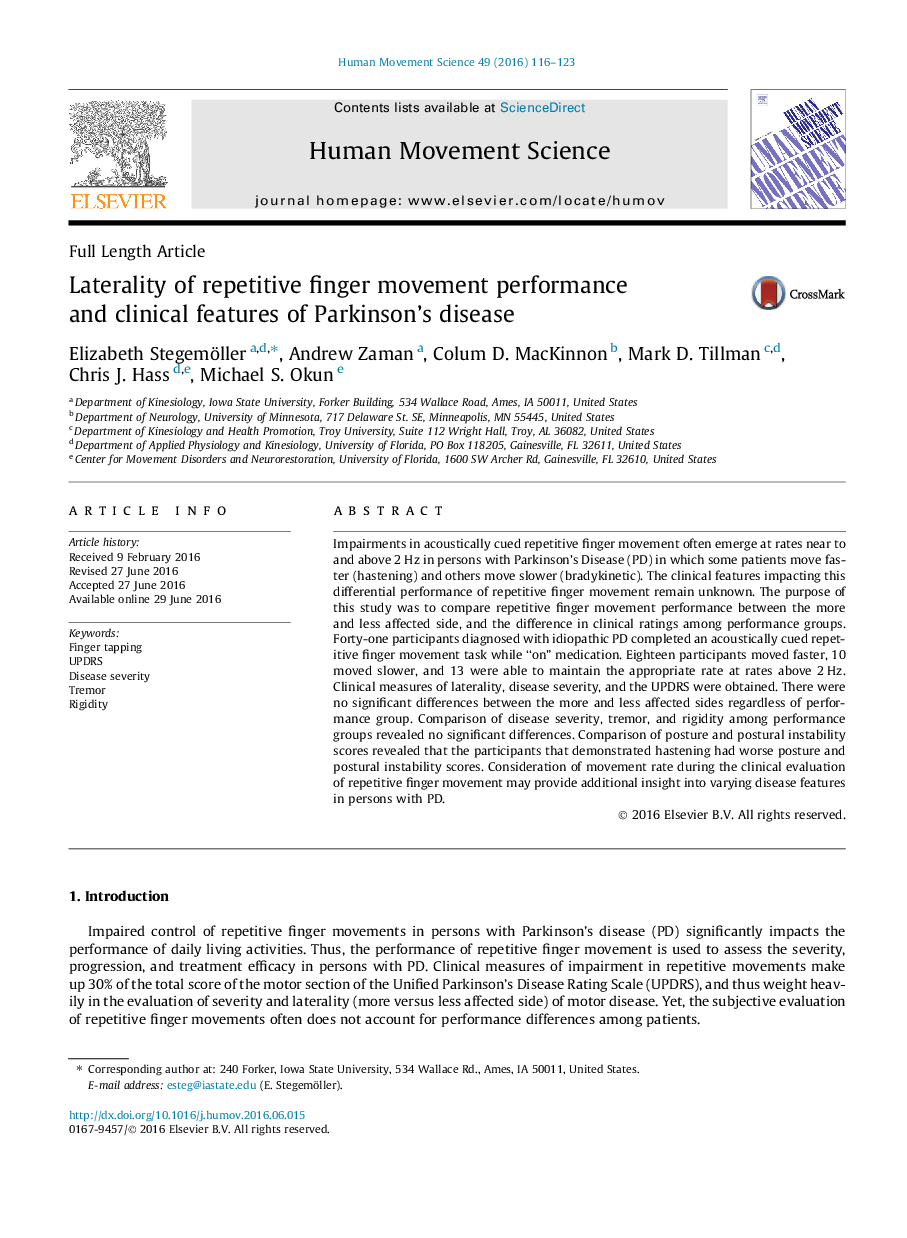| Article ID | Journal | Published Year | Pages | File Type |
|---|---|---|---|---|
| 7291210 | Human Movement Science | 2016 | 8 Pages |
Abstract
Impairments in acoustically cued repetitive finger movement often emerge at rates near to and above 2Â Hz in persons with Parkinson's Disease (PD) in which some patients move faster (hastening) and others move slower (bradykinetic). The clinical features impacting this differential performance of repetitive finger movement remain unknown. The purpose of this study was to compare repetitive finger movement performance between the more and less affected side, and the difference in clinical ratings among performance groups. Forty-one participants diagnosed with idiopathic PD completed an acoustically cued repetitive finger movement task while “on” medication. Eighteen participants moved faster, 10 moved slower, and 13 were able to maintain the appropriate rate at rates above 2Â Hz. Clinical measures of laterality, disease severity, and the UPDRS were obtained. There were no significant differences between the more and less affected sides regardless of performance group. Comparison of disease severity, tremor, and rigidity among performance groups revealed no significant differences. Comparison of posture and postural instability scores revealed that the participants that demonstrated hastening had worse posture and postural instability scores. Consideration of movement rate during the clinical evaluation of repetitive finger movement may provide additional insight into varying disease features in persons with PD.
Related Topics
Life Sciences
Neuroscience
Cognitive Neuroscience
Authors
Elizabeth Stegemöller, Andrew Zaman, Colum D. MacKinnon, Mark D. Tillman, Chris J. Hass, Michael S. Okun,
